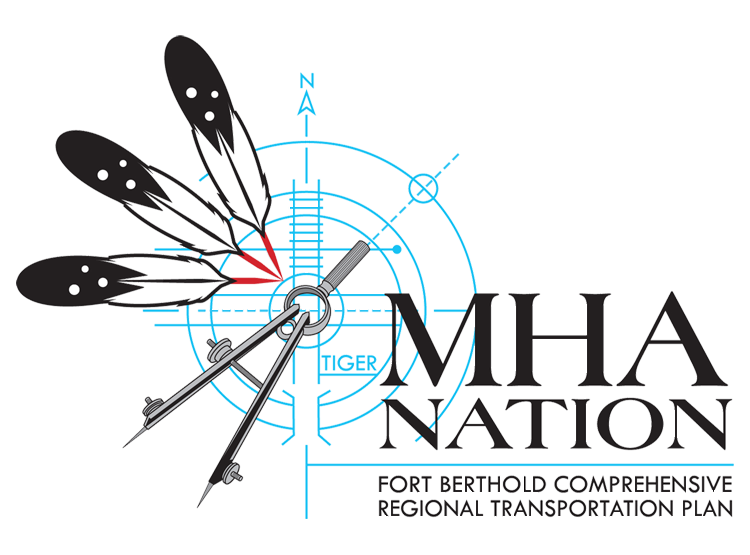Where do we come from?
The Missouri River has always been central to who we are as a people. Central to the creation story of the Mandan and Hidatsa, we were created in the Missouri River Area and have always lived here. Prior to the arrival of Europeans, we used the Missouri River for transportation, hunting, trading, as our main water source, and to cultivate our crops. Tribes from across the Great Plains traveled large distances to trade agricultural products and goods along the river with us. We occupied great distances along the Missouri, from Cannonball to Yellowstone (with other Tribes including the Crow), but our largest fortified villages prospered along the Heart River. In 1888, many communities moved away from Like-a-Fishhook village and settled 20 miles upriver in Elbowoods.1 Prior to the construction of the Garrison Dam, numerous ferries (including the Elbowoods Ferry that operated in the 1920’s) operated across North Dakota in the mid-1800’s to the mid-1900’s to transport “people, cattle, horses, supplies, agricultural products, cars, trucks, and even trains.” 2 With the construction of the Garrison Dam and Lake Sakakawea in 1956, one-sixth of the Fort Berthold land area was flooded (152,360 acres including 94% of our best farmland), and our ferry system (as well as 70% of our road and bridge infrastructure) was permanently lost. The flooding of our river displaced our families, destroyed sacred sites, ruined the best farmland, flooded valuable natural resources, destroyed the economy, and isolated communities that had previously been connected. (Photo Cr: North Dakota Historical Society)

Where are we today?
Lake Sakakawea is the third largest man-made lake in the US (largest in North Dakota), was formed by the completion of the Garrison Dam in 1953 (the lake was fully flooded in 1956) and is named after the Shoshone-Hidatsa woman Sakakawea. It is 14 miles wide at its widest point (Van Hook Arm), consists 1,320 miles of shoreline, is 180 feet deep at its deepest, has a maximum surface area of 480 square miles, and a storage capacity of 23,800,000 acre feet.2 Because of this physical barrier, the only available crossing points to reach all segments are at 4 Bears Bridge west of New Town or 20 miles east of Fort Berthold’s boundaries (Highway 83) near Coleharbor. Today, to get from White Shield to Twin Buttes requires commuters to drive 98 miles, yet a ferry crossing at Old Highway 8 would reduce this distance to 23 miles. Similarly, to get from Parshall to Twin Buttes is a 116 mile drive, yet would only be 30 miles with ferry service. To get to New Town from Twin Buttes requires a 96 miles to drive, a distance cut in half (50 miles) with ferry service. A feasibility study conducted in July, 2016 by the REAP Investment Fund and Vision West determined the viability of reestablishing a ferry system across Lake Sakakawea from White Shield to Twin Buttes at North Dakota Highway 8. They concluded that a car ferry that can carry 30 passengers and 14 cars in this location is estimated to cost between $11,914,000-$20,952,000 (average cost of $16,433,000). 80% of the funding goals are estimated to come from grant dollars ($13,146,400) and 20% from stakeholder costs ($3,286,600). Taking all costs into consideration (ex. fuel and oil, maintenance, labor), the annual operating cost is estimated at $716,000/year. At an estimated “90 ferry passengers per day at $10 each (260 days per year) and 84 automobiles per day at $24 each (260 days per year), the projected annual revenues are estimated at $760,000. For further information, see the report here.

Where are we going?
Community information meetings were conducted recently in Parshall (September 22, 2016) and in Twin Buttes in order to inform community members of the ferry feasibility study results. LSC (the contracted partner) and Three Affiliated Tribes will continue to hold and support public meetings about the ferry feasibility study report to ensure community engagement, input and participation. Grants to fund a ferry service are available from the Federal Highway Administration and would need to be sponsored by the North Dakota Department of Transportation. It would require approval from the US Army Corps of Engineers and an environmental impact study.
What do you think about the ferry feasibility study? What is your vision for improving connectivity for our communities for generations to come? We want to hear from you! The success of the Fort Berthold Comprehensive Regional Transportation Plan is dependent on community engagement, strong leadership, clear research and analysis, and a clear strategic vision. How can we plan for our future in a way that aligns with our cultural, spiritual and environmental values while ensuring a strong economy, jobs, health and education for our communities? How can we maintain our cultural values in a technological landscape that is rapidly changing with innovations such as electric cars, sustainable energy infrastructure, and drones? How can we engage the Tribal community (both off and on reservation), our youth, elders, spiritual leaders, veterans, businesses, schools, programs, neighbors as well as other stakeholders including State, Federal and County governments in a way that ensures a brighter future for our next generations?

